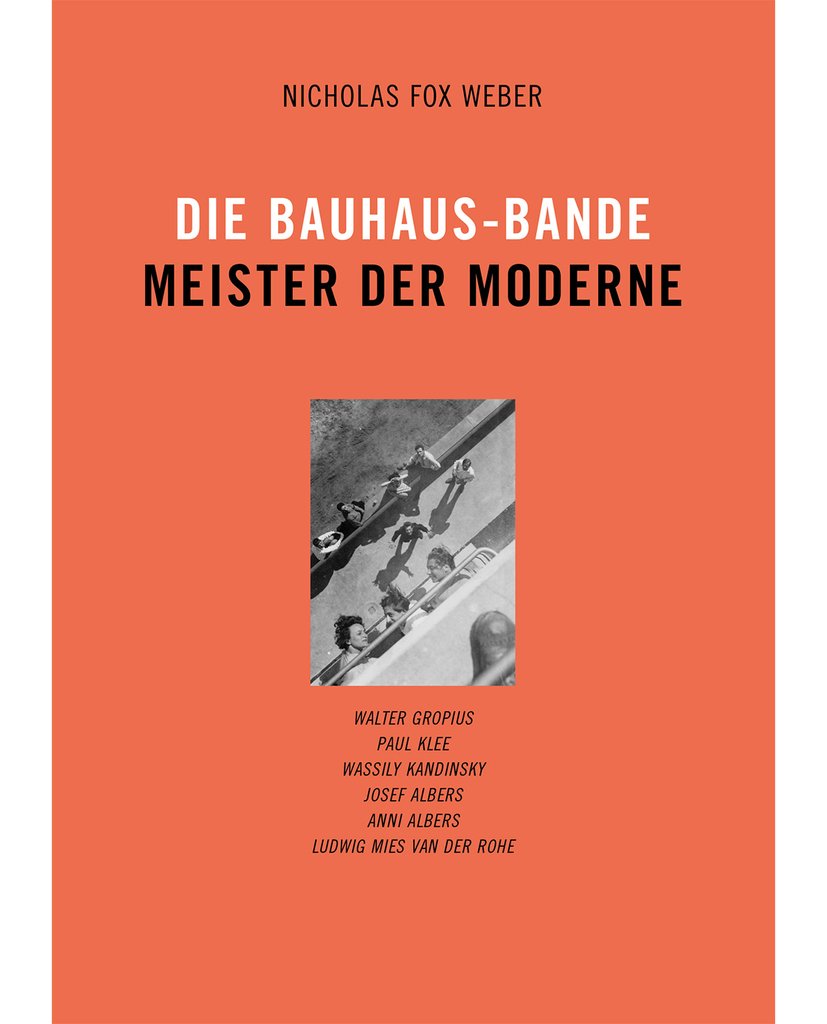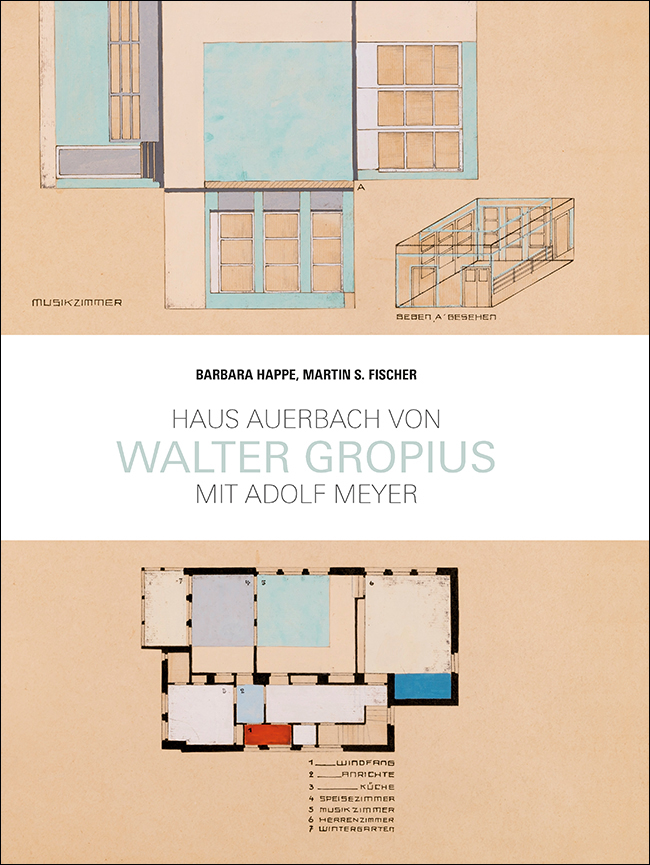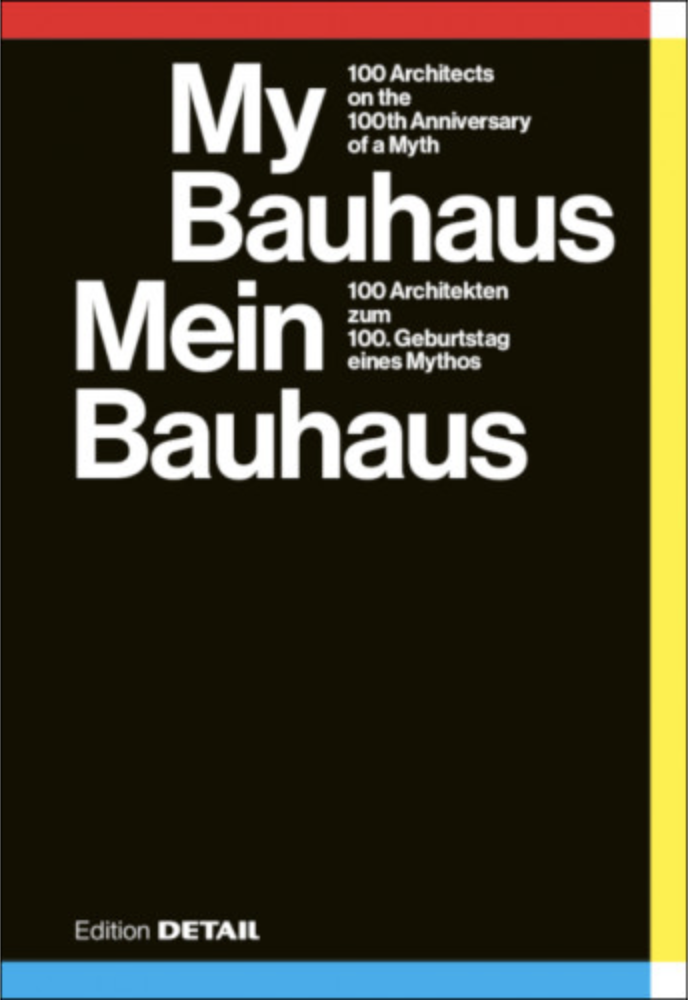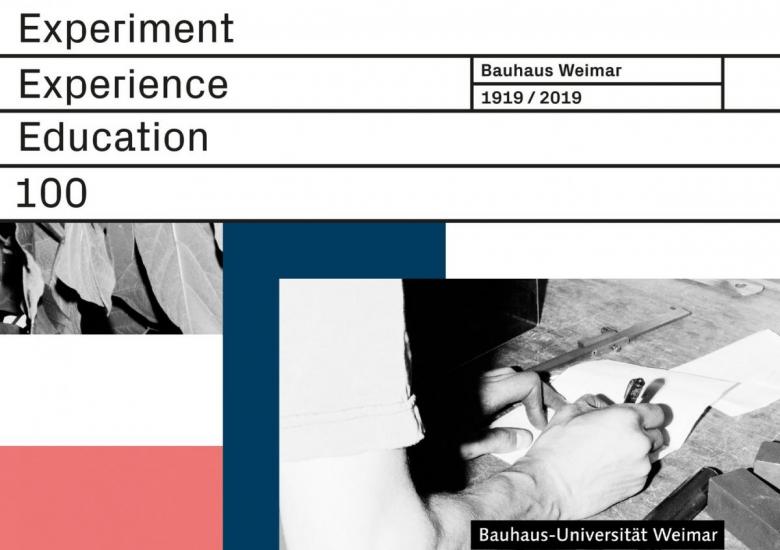The Bauhaus Anniversary at a Glance
There is no way to get around the Bauhaus in 2019. Whether in the form of relaunched furniture series, numerous publications from architecture and art publishers, the ads of tour operators, or announcements of special shows and exhibitions, you will encounter it everywhere. This is an overview of events and a few recommended readings for the Bauhaus's centennial.
One hundred years ago, Walter Gropius founded the "Staatliches Bauhaus Weimar," commonly known as the Bauhaus, which commenced its work in April 1919. At the Bauhaus-Universität Weimar, the place of its foundation, the anniversary has been celebrated since the beginning of the 2018 winter term. The university celebrates the centennial with exhibitions, a lecture series, conferences, and several publications. President of the university, Professor Dr. Winfried Speitkamp, also considers the anniversary an opportunity to express the current challenges and future tasks of the school and to further develop the Bauhaus with a new range of study programs.
The central element of the anniversary activities is the Bauhaus.Semester, for which teachers and students have created new interdisciplinary teaching formats. In the spirit of the founders, the four faculties interact with each other and experiment together. Mexican diplomat Patricia Espinosa was selected for the newly created Bauhaus guest professorship, which is awarded once a year for one semester. As Secretary General of the Secretariat for the UN Framework Convention on Climate Change, long-time Foreign Minister of her country, and former Mexican Ambassador to Germany, Espinosa wants to sensitize the academic world to the challenges of climate change.
The 14th International Bauhaus Colloquium in April and the big Franz Meets Walter in Räumen festival organized by the Bauhaus-Universität Weimar and the University of Music Franz Liszt Weimar are two of the highlights in early 2019. The Bauhaus Colloquium is one of the oldest and most renowned conferences on the theory and history of architecture in the German-speaking world. From April 10-12, the colloquium will examine in detail the history of the Bauhaus at its original sites in Weimar, Dessau, and Berlin and reflect on its international reception and migration. Since fall 2018, theme-based exhibitions have been introducing the Bauhaus year: two parts of the "Radiophonic Spaces" show, one at Museum Tinguely in Basel and one at the Haus der Kulturen der Welt in Berlin; "Galerie Eigenheim Weimar/Berlin;" "Bauhaus Studio 100;" "Matter of Data – Auf den Spuren der 'Bauhaus-Moderne'" in the new Bauhaus Museum; and "Imaginary Bauhaus-Museum" in cooperation with the Klassik Stiftung Weimar.
On Bauhaus Walks, students guide visitors through the university's building ensemble, which was built by Henry van de Velde between 1904 and 1911 and declared a UNESCO World Heritage Site in 1996. If you want to visit Walter Gropius' director's room and see wall reliefs and murals by Oskar Schlemmer and Herbert Bayer, make an effort to get tickets in time. Visitors are also allowed to walk around the building on their own, with an audio guide providing information. It was developed by the chairs of Experimental Radio as well as Monument Preservation and Building History. The audio plays include facts, interviews, stories, music, and sounds on twelve locations.
Beyond the university, an illustrated map helps you explore the city. On three different routes you will learn about Weimar in the 1920s. The map is developed by the Media Science degree program. And if you can't make it to Weimar and still want to stay informed, you can follow the Bauhaus.Podcast. This experimental format also involves students who deal with music and sound art during the Bauhaus.Semester.
Publications
Numerous books have already been published in 2018 on the occasion of Bauhaus anniversary. Here we briefly describe a few selected ones, though others will follow in the course of 2019. After all, there are 365 days in the Bauhaus year!
Die Bauhaus-Bande. Meister der Moderne by Nicholas Fox Weber
Anni and Josef Albers were the only artist couple at the Bauhaus. For many years they gave the author an account of life at the Bauhaus. These reports were about personalities such as Walter Gropius, Paul Klee, Wassily Kandinsky, and Ludwig Mies van der Rohe as well as their lesser-known wives and girlfriends. The book is a kind of group biography with Nicholas Fox Weber bringing to life the world of the 1920s and early 1930s. It is about Paul Klee, the observer who, contrary to the imperious and strict Ludwig Mies van der Rohe, preferred to remain in the background. Or about Walter Gropius, who as an architect founded the Bauhaus and considered the school a place for designers. It also describes Anni Albers, who made art her focus.
"Weber captures the spirit and flair with which these geniuses lived and their consuming goal to create art and architecture," the publisher explains. The group portrait is characterized by their embrace of life, their gifts of laughter, and the portrayals of the individual artistic personalities in the community. The reader has thee feeling of being right there when Paul Klee prepares a leg of mutton or raves in letters to his wife Lily about eating ham at midday. Pupils like Marianne Heymann also have their say; quotes give the teacher a human touch, whose criticism could be devastating and whose friendly words were mesmerizing. Nicholas Fox Weber manages to present each personality very comprehensively and fairly, building on the conversations with the Albers Couple and his own research.
Note: The original English version, The Bauhaus Group. Six Masters of Modernism, published in 2011 by Yale University Press, is out of print.
 |
Die Bauhaus-Bande. Meister der Moderne Nicholas Fox Weber Translation: Claudia Kotte 165 x 235 mm 544 pages 125 illustrations Hardcover ISBN 978-3-86922-480-0 November 2018, DOM publishers |
THIRTYTHREE
Bauhaus teacher László Moholy-Nagy emigrated from National Socialist Germany to Great Britain together with Marcel Breuer and Walter Gropius. Later in the United States, Moholy-Nagy continued to teach in Chicago according to the Bauhaus tradition. The pupils were to be taught a sense of texture, color, light, and volume in order to add a sensual component to the formalist dictum of austere modernism. That's what characterized Moholy-Nagy's collages and photographs. The catalog THIRTYTHREE: A New Horizon of Photography at Moholy-Nagy University of Art and Design Budapest, published by Hatje Cantz, deals with these photographs and their legacy. The book is dedicated to a generation of young photographers who have studied at the Moholy-Nagy University of Art and Design (MOME) over the last 33 years.
 |
THIRTYTHREE 17 x 24 cm 52 pages, 177 images with foldouts English ISBN 978-3-7757-4452-2 2018, Hatje Cantz |
The Auerbach House by Walter Gropius with Adolf Meyer by Barbara Happe, Martin S. Fischer
This book tells the moving story of the Jewish Auerbach couple, who had a formative influence on social life in Jena around the turn of the century, consorted with Edvard Munch, fought for women's rights and, with this house, also took a stand against the expulsion of the Bauhaus from Weimar. In 1924, Haus Auerbach was the first private residential house that Walter Gropius, then Bauhaus director, built in the Bauhaus style. The villa in Jena, constructed in collaboration with Adolf Meyer, is one of the most important milestones for the early years of the Bauhaus. The authentic interior color scheme is the most outstanding feature of this building. It was only during the restoration of the house that it was discovered that all the interior walls had been painted according to color schemes designed by Alfred Arndt. Today the house, which has been preserved in almost every detail, shines again in the original 37 pastel shades.
 |
The Auerbach House by Walter Gropius with Adolf Meyer Barbara Happe, Martin S. Fischer Hardcover 21 x 27 cm 136 pages, numerous color and b/w illustrations German: ISBN 978-3-86859-564-2 English: ISBN 978-3-86859-574-1 September 2018, Jovis |
My Bauhaus / Mein Bauhaus edited by Sandra Hofmeister
In this book, 100 international architects express their personal views of and associations with the Bauhaus. In short texts accompanied by photographs or sketches, they describe what they associate with the school of the avant-garde and to what extent the Bauhaus is personally relevant to them – very different viewpoints on the myth. Including, among others: Atelier Bow-Wow, Balkrishna Doshi, Stefan Behnisch, Norman Foster, Grafton Architects, Dorte Mandrup, and Bernard Tschumi.
 |
My Bauhaus / Mein Bauhaus 100 Architects on the 100th Anniversary of a Myth Sandra Hofmeister (editor) 15 x 20 cm, 240 pages with numerous sketches and photographs Hardcover ISBN: 978-3-95553-451-6 German / Englich November 2018, Edition DETAIL |
This article originally appeared as "Das Bauhaus-Jubiläum im Überblick" on German-Architects. Translation by Bianca Murphy.
